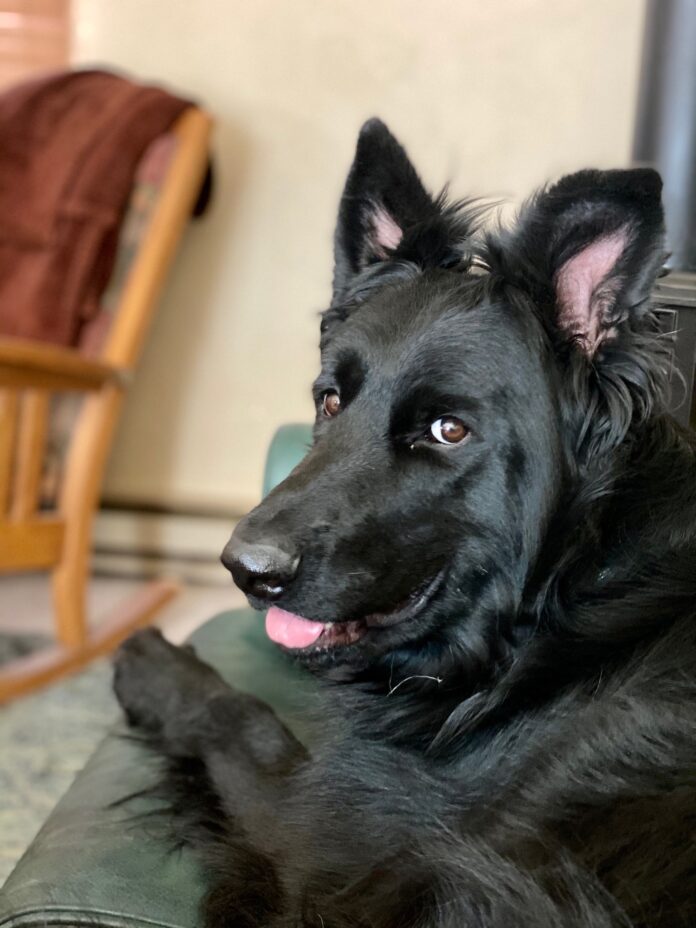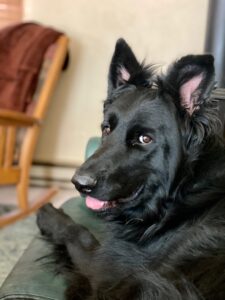
By Fran Jewell

Many people don’t even believe in dog “dominance.” It has now become an evil word if you are a modern dog-training enthusiast. Merriam-Webster dictionary defines dominance as “more important, powerful, or successful than most or all others.” I watch dog behavior day after day and see one dog that pushes another around, or one that controls all the interactions. Social hierarchy is EXTREMELY important to dogs, even though it might not be how we humans like to view our sweet, adorable companions.
Every day my dogs will see who can get out the door first or the fastest. Every day I see dogs using height to determine who is higher in status by doing things as simple as laying on the back of the sofa, or sleeping at the top of the stairs. Some dogs will roll over, exposing themselves to other dogs, while some dogs will stand erect, tail high and hackles raised, to display who they are to other dogs.
Some breeds are more dominant by nature than others. Terriers tend to be more aggressive in nature than hunting dogs. Of course, this is a general rule and not certain of every dog of that breed. And every litter of puppies will have a pup more dominant than another.
What is hard for our human culture to understand is how a young puppy, sweet and innocent, could possibly become dominant and/or aggressive. It is their “cuteness” and their sweetness that lures us into treating them as we would a stuffed animal, with endless cuddles, free food and treats, and no consequences for bad behavior, and send our beloved pet to the dark side.
What is the “dark side?” Examples are growling if you come near the food bowl; so-called protecting us from others; demand barking for treats, walks or other valuable items; guarding favorite places such as a special chair, a bed or even YOUR bed; dragging you down the street when put on a leash; refusing to allow you to hold their collar or chewing on their leash. Sometimes a dominant dog will not allow you to touch their feet by growling. One of my favorites is a dog that rolls over on his back to keep from doing whatever it is that you want him to do or mouthing you. Dominant dogs get what they want because they have learned ways to make that happen. Dominance can turn into aggression. Then, the dark side has become the “black side.”
So, what do we do? Prevention is always the best. An ounce of prevention is truly better than a pound of cure. Start teaching rules as puppies or the second an adoptee comes home. Love, love, love, but only when your dog works for it by doing sit, down, come. Remember, the higher a dog is, the higher he is in social status. Allowing dogs access to higher places, such as the back of the sofa, sitting on a window ledge, or standing at the top of the stairs, can signal to your dog that he is higher in social status than you are.
While not all dogs have dominant tendencies, it is entirely possible to take a dog that came to you without those tendencies and create a monster impossible or dangerous to live with. With forethought and care enough to provide direction and boundaries, our sweet dogs can remain a glimmer of light in our world.
Fran Jewell is an IAABC Certified Dog Behavior Consultant, NADOI Certified Instructor and the owner of Positive Puppy Dog Training, LLC in Sun Valley. For more information, visit positivepuppy.com or call 208-578-1565.
